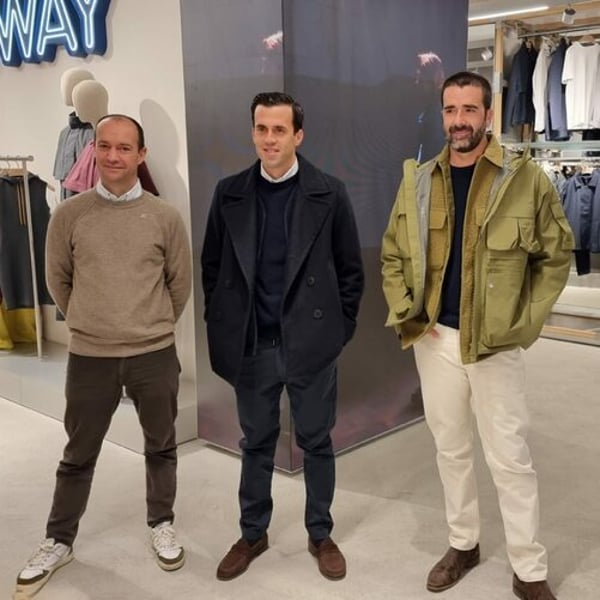Translated by
Nazia BIBI KEENOO
Published
October 31, 2025
On October 30, LVMH and UNESCO renewed their five-year partnership. Initiated in 2019 as part of the Group’s Life 360 environmental program, this agreement aims to support the implementation of the “Man and the Biosphere” (MAB) Program, which promotes the preservation and restoration of ecosystems in UNESCO-recognized biosphere reserves. The new agreement, signed by LVMH Image and Environment Director Antoine Arnault and UNESCO Director-General Audrey Azoulay, covers the period from 2025 to 2029.

The French group is committed to strengthening its actions in support of biodiversity, notably through research, awareness-raising initiatives, and sustainable local development projects in new regions.
“The initial five-year partnership aimed to preserve biodiversity in UNESCO-designated areas in the Amazon. We worked in eight areas in Bolivia, Ecuador, Peru, and Brazil. It’s a fundamental issue, for the simple reason that our products come from nature,” explained Hélène Valade, LVMH’s Environmental Development Director, to a group of journalists on October 30. “With UNESCO, we have developed a method. The first element of this method is that you can’t protect biodiversity if you don’t take care of local communities. We have created a geospatial platform that enables us to collect biodiversity data, combining scientific expert data with local community data.”
The program included training, strengthening local activities, and measuring the impact of actions. This process is now being replicated across all projects covered by the expanded partnership.
For this new phase, Tiffany & Co. is joining the initiative. The jeweler is aligning with this approach through its “Delivering a Healthy Ocean” initiative, which aims to protect marine and coastal ecosystems and support scientific research.
On the ground, this partnership is reflected in actions carried out in several pilot areas in Africa, Asia, and South America. Among these, the program to restore the Tonlé Sap biosphere reserve in Cambodia exemplifies this approach: LVMH supports reforestation initiatives, sustainable water management, and the development of economic activities that respect the ecosystem. These projects align with Life 360’s commitments, which aim to make the preservation of the living world a central pillar of the Group’s environmental strategy.

A strategy that continues to gain momentum, according to the president of the Group’s CSR Observatory: “Despite the current context, it is ever more deeply rooted in LVMH’s DNA. We are more committed than ever to our strategy.”
While the Group is highlighting its partnership with UNESCO, ten years after the Paris Agreement and COP21, LVMH is also implementing new tools to refine its environmental strategy and bring the teams of its 75 Maisons on board. As the executive explains, over the past ten years, since 2015, the luxury giant has increased the share of renewable energy in its energy mix from 8% in 2015 to 71% in 2024, highlighting the many changes made by the Group in its direct operations, including impact measurement indicators now integrated into teams’ day-to-day practices.
To go further, however, the Group needs to work in depth on Scope 3 emissions — that is, the emissions generated by its suppliers. And to make progress on this front, the executive explains that the Group is pursuing several initiatives in parallel.
“On September 17, we organized a meeting with the environmental responsibility directors and the finance directors of our Maisons, to adopt a very cross-functional finance-sustainability approach,” explained Hélène Valade. “It was an extremely powerful moment of aligning our terminology with practical aspects, such as ‘How do you approach a climate transition plan financially?’ We decided to create a sustainability-finance task force.”
Its mission is to work on a financial approach to climate and biodiversity risks for LVMH.
“On the first point, we know that, according to IPCC scenarios, some of our supply chains are at risk. But we need to quantify this, because inaction on climate has a cost. The task force must also create a framework for investment capacity based on environmental criteria.”
Given that oversight of the supply chain and subcontracting is a particularly sensitive issue in the luxury sector following recent scandals in Italy, the Group also brought together 120 of its key suppliers last spring to raise awareness of the challenges involved in transforming business models. “They are our Scope 3, so we need to look after them and support them in their environmental transition,” said Hélène Valade, who advocates an incentive-based model rather than sanctions on this subject.
“It was a moment of co-creation. They are aware of the issues but face a heavy administrative burden and multiple reporting requirements. We need to help them in this respect. Some innovations may benefit all parties. We need to support them on these issues.” With this in mind, the Group has opened its training programs to its partners.
This article is an automatic translation.
Click here to read the original article.
Copyright © 2025 FashionNetwork.com All rights reserved.







